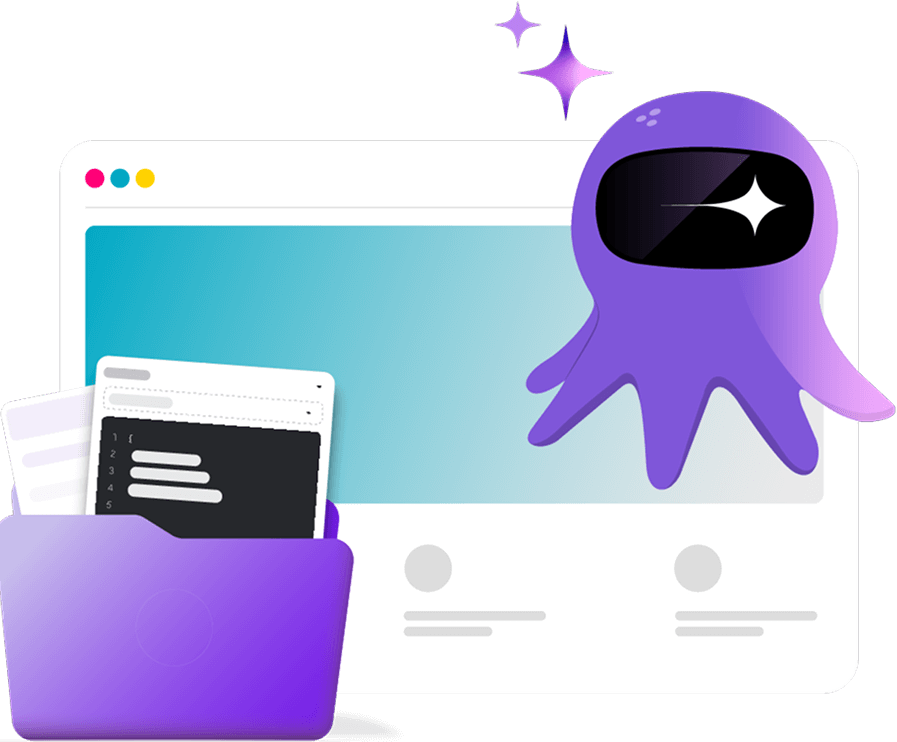In today’s competitive business ecosystem, organizational culture is a strategic differentiator. Up to 72% of employees say they would leave a company for a better cultural fit. In a world where culture defines success, businesses can’t afford to ignore what drives engagement and retention: their organizational culture. Research shows that companies with strong cultures outperform competitors by 20-30% in profitability and experience lower employee turnover (Deloitte, 2023). Yet, many executives struggle to quantify and optimize their culture. This is where a company culture assessment becomes indispensable.
Table of Contents
A culture assessment is not just a survey or a one-time audit; it’s a systematic process to evaluate, measure, and enhance workplace values, behaviors, and engagement. Organizations that adopt culture tests consistently see improvements in employee satisfaction, productivity, and talent retention.
This blog provides an in-depth, research-backed guide detailing what a culture assessment is, its types, benefits, key metrics, and how it drives long-term growth.
TL;DR – Key Takeaways!
- Culture assessment is a structured process to evaluate organizational values, behaviors, and employee alignment.
- It combines employee engagement surveys, interviews, psychometric assessments, and HR analytics to provide actionable insights.
- Types include quantitative surveys, qualitative interviews, cultural fit assessments, behavioral assessments, and organizational health assessments.
- Conducting workplace culture assessments boosts employee engagement, talent retention, leadership effectiveness, productivity, and strategic decision-making.
- Key metrics include employee engagement scores, cultural alignment index, retention/turnover rates, performance metrics, and leadership effectiveness.
- Tools used include cultural fit assessment tools, psychometric tests, HR analytics platforms, and 360-degree feedback mechanisms.
- Strong culture drives talent retention, high-performance teams, innovation, and sustainable organizational growth.
- Xobin provides AI-powered talent assessments to assess culture, enhance employee satisfaction and engagement, ensure talent acquisition aligns with culture, and drive culture-based performance management.
- HR leaders can leverage culture assessments to transform culture into a strategic superpower for long-term growth and competitive advantage.
What Is a Culture Assessment and How Does It Work?
A culture assessment is a structured process used to evaluate the beliefs, behaviors, values, and practices that define an organization’s work environment. It is a diagnostic tool that allows leaders to understand how aligned their employees are with the company’s vision, mission, and goals. According to Gallup (2022), engaged employees who align with company culture are 59% less likely to leave, making cultural alignment a critical retention driver.
Organizations conduct culture assessments for talent retention to evaluate cultural alignment and ensure employees stay engaged, motivated, and aligned with strategic goals. This process uses employee feedback, psychometric and behavioral assessment, along with HR analytics to strengthen workplace culture.
How Culture Assessment Works?
- Data Collection: Organizations use surveys, interviews, and employee engagement surveys to gather quantitative and qualitative insights.
- Behavioral Analysis: Tools like cultural surveys and psychometric assessments help assess individual and team alignment with organizational values.
- Metrics & Benchmarking: Analysis of company culture metrics identifies gaps between desired and actual culture.
- Reporting & Insights: Actionable insights are generated to guide leadership decisions, impact of culture on productivity, and strategies for fostering a high-performance culture.
Organizational culture assessments are predictive, not just descriptive. They help executives anticipate turnover risks, identify high-potential employees, and optimize team performance.
For instance, a SaaS company using Xobin’s cultural assessment tests identified that teams with higher cultural alignment had 23% higher project delivery rates, proving the measurable impact of culture on performance.
Want to assess your company’s culture scientifically? Use Xobin’s AI-powered culture assessment to uncover alignment gaps, improve engagement, and retain top talent.
Book A DemoTypes of Culture Assessment
Different organizations require tailored culture assessment approaches. Research suggests combining multiple methods yields the most comprehensive insights (Harvard Business Review, 2023).
Quantitative Surveys
Quantitative surveys form the backbone of many culture assessments, providing standardized measures of engagement, satisfaction, and alignment with corporate values. These surveys allow organizations to monitor trends over time and evaluate the impact of initiatives on employee satisfaction and engagement.
Qualitative Interviews & Focus Groups
Qualitative interviews and focus groups offer deeper insights that surveys alone cannot capture. These methods shed light on leadership and organizational culture, uncovering perceptions, motivations, and potential cultural barriers. This nuanced understanding helps leaders address issues that may otherwise go unnoticed.
Cultural Fit Assessment
Cultural fit assessments focus specifically on talent acquisition and culture fit. They help organizations ensure that new hires and current employees share the company’s core values, which reduces turnover and enhances team cohesion.
Behavioral & Psychometric Assessments
Behavioral and psychometric assessments provide objective measurements of traits, preferences, and working styles. Organizations can also strategically assess culture fit using psychometric tests to gain deeper insights into employee alignment.
Organizational Health Assessment
Organizational health assessments evaluate the overall system of an organization, including workflows, communication patterns, and decision-making structures. This comprehensive approach to workplace culture evaluation identifies systemic issues that may affect employee engagement and performance.
How to Evaluate Culture Fit Effectively?
Evaluating culture fit is critical for building high-performing teams, improving retention, and ensuring organizational alignment. Culture fit ensures that employees not only have the right skills but also resonate with the company’s values, behaviors, and mission. The evaluation process involves objective online assessments, structured interviews, and data-driven insights.
Define Organizational Values and Culture
Before assessing culture fit, HR leaders must clearly define the core values, behaviors, and cultural traits that drive the organization. This includes identifying leadership expectations, communication styles, collaboration norms, and the desired work environment.
Use Structured Culture Assessment Tools
Objective workplace culture assessment tools are essential to measure cultural alignment consistently. Platforms like Xobin offer cultural assessment tests that evaluate how well employees’ or candidates’ values, work styles, and behaviors align with organizational culture.
Incorporate Behavioral and Psychometric Insights
Culture fit isn’t just about alignment with values, it’s also about how people work and interact. Behavioral and psychometric assessments provide insights into decision-making style, teamwork, adaptability, and leadership potential.
Analyze Data and Identify Patterns
The next step involves analyzing assessment data to identify trends, strengths, and gaps. Insights from corporate culture assessments can highlight which teams or departments have strong alignment and where cultural gaps exist. This data-driven approach allows HR leaders to implement targeted interventions for employee engagement, development, and retention.
Combine Assessment Results with Interviews
While assessments provide quantitative insights, structured interviews offer qualitative context. Interviewers can explore how candidates or employees demonstrate cultural traits in real scenarios. Combining assessment results with behavioral interviews ensures a holistic understanding of cultural fit.
Implement Feedback and Continuous Evaluation
Culture fit is not static; it evolves as the organization grows. Continuous monitoring of cultural alignment through regular assessments, surveys, and feedback loops helps HR and leadership teams maintain alignment, improve engagement, and foster a high-performance culture.
Benefits of Conducting a Culture Assessment
Research shows that companies with strong, aligned cultures experience higher revenue growth and employee retention (McKinsey, 2022). The benefits of a culture assessment are both strategic and operational:
Enhanced Employee Engagement
Understanding cultural alignment allows leaders to implement strategies for improving employee experience through cultural insights, resulting in more motivated and productive employees.
Higher Retention Rates
A structured culture test for talent retention identifies misalignment early, reducing turnover. Deloitte reports that culture-fit hires are 50% more likely to stay beyond three years.
Stronger Leadership & Organizational Alignment
Insights from cultural alignment in organizations guide leadership training, succession planning, and decision-making. Leaders aligned with culture drive higher team engagement.
Optimized Talent Acquisition
Integrating cultural fit assessment tools in recruitment ensures new hires complement existing values, improving employee satisfaction and engagement.
Increased Productivity
A strong culture positively impacts performance. Culture-driven performance management strategies align team goals with organizational priorities, boosting productivity.
Strategic Business Decisions
HR analytics for workplace culture enables executives to connect cultural insights with business KPIs, supporting evidence-based strategic decisions.
Key Metrics & Tools Used in Culture Assessments
To make workplace culture assessments actionable, companies must rely on robust HR automation tools for culture analysis and clear metrics.
Key Metrics to Measure Culture Fit
- Employee Engagement Score: Measures commitment, satisfaction, and alignment.
- Cultural Alignment Index: Measures how closely employees’ values match company values.
- Retention & Turnover Rates: Assesses the effect of culture on talent retention.
- Performance Metrics: Links culture to productivity, innovation, and profitability.
- Leadership Effectiveness: Measures alignment between leadership style and cultural expectations.
Tools & Techniques to Evaluate Culture Fit
- Employee Engagement Surveys: Provides quantifiable insights into satisfaction and motivation.
- Cultural Fit Assessment Tools: Measures individual alignment with organizational values.
- Psychometric & Behavioral Assessments: Objective evaluation of personality, traits, and behavioral patterns.
- HR Analytics Platforms: Integrates multiple data sources for actionable reporting.
- 360-Degree Feedback Mechanisms: Captures comprehensive perspectives from peers, managers, and subordinates.
Assess Cultural Assessment with Xobin
At Xobin, we understand that a thriving organizational culture is not accidental; it is a strategic asset. Our AI-driven psychometric and behavioral assessments provide organizations with actionable insights into culture, engagement, and talent alignment.
Why Xobin for Culture Assessment?
- Comprehensive Cultural Evaluation: Assess values, behaviors, and engagement with cultural fit assessment tools.
- Data-Driven Insights: Leverage analytics for workplace culture to inform strategic decisions.
- Employee-Centric Approach: Identify gaps, optimize experience, and enhance employee satisfaction and engagement.
- Talent Acquisition & Retention: Ensure talent acquisition and culture fit align with company values.
- AI-Driven Recommendations: Drive culture-driven performance management and high-performance teams.
- Actionable Reports: Receive insights that enable culture-driven performance management and organizational growth.
Xobin can turn culture assessment into a strategic advantage for your organization, unlocking the full potential of your workforce and driving sustainable growth. Take your organization’s culture to the next level. Book a personalized demo with Xobin today and discover your organization’s superpower.
FAQs
1. What are the types of culture assessments?
Culture assessments can be quantitative surveys, qualitative interviews, cultural fit assessments, behavioral and psychometric tests, and organizational health assessments.
2. How can culture assessments improve employee engagement?
They identify alignment gaps, reveal employee needs, and guide strategies that boost motivation, satisfaction, and team collaboration.
3. How does Xobin help in assessing culture fit?
Xobin uses AI-powered psychometric and behavioral assessments to measure values, work styles, and engagement, ensuring talent aligns with organizational culture.







